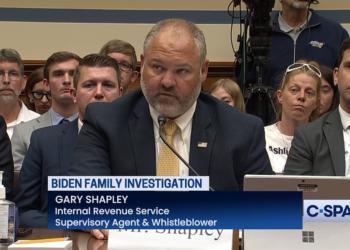Three people died in Mammoth Lakes, California, from hantavirus pulmonary syndrome, the disease that suddenly killed actor Gene Hackman’s wife, Betsy Arakawa.
Hantaviruses are a family of pathogens spread by rodents, mostly mice, and excreted from their saliva, urine, and droppings. If left untreated, HPS can progress rapidly and result in low blood pressure, low oxygen levels, and death by organ failure.
“The occurrence of three cases in a short period has me worried, especially this early in the year,” Dr. Tom Boo, Mono County public health officer, said in a press statement confirming the third death last week.
Boo added that he was “concerned about the increase in activity,” noting that hantavirus infections usually occur in the late spring and early summer.
Here is everything to know about the rare but fatal infection.
What are the symptoms?

The early symptoms of HPS are similar to cold and flu symptoms, which can complicate early diagnoses of the more serious condition.
A fever higher than 101 degrees Fahrenheit, along with body aches, chills, and a headache, are some of the first signs of HPS, according to the American Lung Association. Nausea, vomiting, and abdominal pain are also early symptoms.
The Centers for Disease Control and Prevention said HPS patients often develop a dry cough and shortness of breath between 4 and 10 days of symptom onset, potentially experiencing chest tightness due to fluid collection in the lungs.
In a severe infection, the virus damages the heart’s ability to pump blood, causing very low blood pressure and decreased oxygen levels. If untreated, this can lead to organ failure and death.
Approximately 38% of patients who develop respiratory symptoms could die from the disease, according to the CDC.
How do people get infected?
Since there are no rapid diagnostic tests specifically for HPS, a history of rodent exposure is the fastest way to identify the infection.
Rural populations with exposure to wild rodents are most at risk, said the ALA.
“Because HPS is an airborne disease spread by rodent saliva, urine, or feces, you might never see a rodent and still breathe air contaminated by the virus,” says the ALA’s briefing page on HPS.
Deer mice are the most common carriers of the virus. Other carriers include the white-footed mouse, cotton rat, and rice rat. The house mouse and the Norway rat, the most frequently encountered rodents in urban communities, are not carriers.
Boo said in his press statement that the deer mouse population has increased in Mammoth Lakes over the years, likely affecting the entire Eastern Sierra region.
“I want to emphasize that as far as we know, none of these deceased individuals engaged in activities typically associated with exposure, such as cleaning out poorly ventilated indoor areas or outbuildings with a lot of mouse waste,” said Boo, adding that they may have been exposed through normal daily activities in the home or workplace.
What is the treatment?
The CDC said there is no specific treatment for a hantavirus infection, but clinicians need to act quickly if HPS is suspected in a patient.
“Early intensive medical care is critical because patients who have sudden acute disease can rapidly become severely sick and die,” says the CDC’s guidance for healthcare providers. “If a patient is experiencing full distress, it is less likely the treatment will be effective.”
Even if there isn’t a confirmed diagnosis, patients should seek emergency medical care to have their heart function and oxygen levels monitored to prevent symptoms from developing.
Without swift and sufficient treatment, the CDC said most deaths occur in patients with HPS within 24 to 48 hours of developing cardiopulmonary trouble.
How rare is HPS exactly?
Between 1993 and 2022, there were 864 cases of hantavirus disease in the United States, averaging about 30 cases annually. That includes HPS and nonpulmonary hantavirus infections.
During that time, 34 states identified cases of HPS, mostly in the Four Corners region where Utah, Arizona, New Mexico, and Colorado meet.
Nearly all cases, 96%, occurred in states west of the Mississippi River.
How do you minimize risk?
Preventing a rodent infestation in and around the home is the best defense against HPS and other hantavirus infections, according to the CDC. This includes ensuring that rodents do not have food and water sources or easy places for shelter.
The CDC recommends sealing gaps or small holes in and around the home, such as inside kitchen cabinets, around windows and doors, or behind appliances and other areas where rodents can get in.
Mice, in particular, can fit through a hole about a quarter of an inch in diameter, about the width of a pencil.
HOUSE DEMOCRATS INVESTIGATING RFK JR. OVER ‘RECKLESS’ BIRD FLU RESPONSE
In California, Boo recommended in his press release residents avoid sweeping or vacuuming rodent droppings, nests, or urine to prevent virus particles from spreading through the air.
The county instead recommended spraying contaminated areas with a disinfectant or a 10% bleach solution and letting it sit for at least five minutes before wiping clean. Wearing an N-95 mask is a must when cleaning rodent debris, said Boo.














